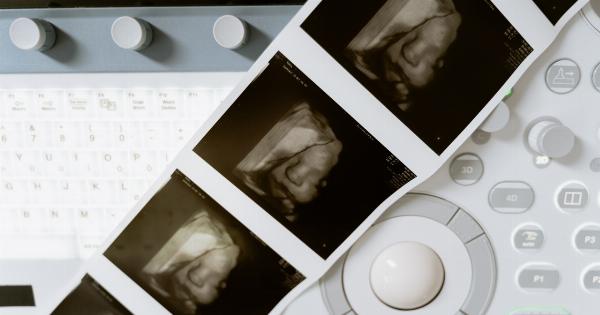Venous insufficiency is a condition characterized by the inadequate flow of blood from the veins back to the heart. It occurs when the valves within the veins are damaged or weakened, leading to blood pooling in the legs or other areas of the body.
Timely and accurate diagnosis of venous insufficiency is crucial for effective treatment. One of the diagnostic methods used is the use of images, which can provide valuable insights into the condition and aid in determining the appropriate course of action.
Ultrasound Imaging
One of the most common imaging techniques used for diagnosing venous insufficiency is ultrasound imaging. This non-invasive procedure utilizes high-frequency sound waves to produce images of the veins.
It allows healthcare professionals to visualize the blood flow and assess the condition of the veins.
Color Doppler Ultrasound
Color Doppler ultrasound is a specific type of ultrasound that enables the evaluation of blood flow within the veins. This imaging technique uses color-coded images to represent the direction and velocity of blood flow.
By observing the color patterns, healthcare providers can identify areas of blood reflux or retrograde flow, indicating venous insufficiency.
Duplex Ultrasound
Duplex ultrasound combines traditional ultrasound imaging with Doppler ultrasound. It provides both structural and functional information about the veins, offering a comprehensive assessment.
This technique allows for the visualization of the veins’ anatomy while also evaluating the blood flow characteristics. It is particularly useful in identifying venous valve abnormalities and determining the severity of the condition.
Magnetic Resonance Imaging (MRI)
Magnetic resonance imaging, or MRI, is another imaging modality used in diagnosing venous insufficiency. It employs a strong magnetic field and radio waves to generate detailed images of the veins and surrounding tissues.
MRI can provide valuable information about the structure and patency of the veins, aiding in the identification of venous obstructions or abnormalities.
Computed Tomography (CT) Venography
CT venography is a radiographic imaging technique specifically designed to visualize the veins. It involves the injection of a contrast material into a vein, followed by a series of CT scans.
The contrast material enhances the visibility of the veins, allowing for detailed examination. CT venography can identify venous reflux, obstructed veins, or other abnormalities contributing to venous insufficiency.
Photoplethysmography (PPG)
Photoplethysmography is a non-invasive imaging technique that measures changes in blood volume within the veins. It involves the use of light sensors placed on the skin to detect variations in near-infrared light absorption.
By analyzing these variations, healthcare professionals can assess the efficiency of venous return and identify potential areas of blood stasis, indicating venous insufficiency.
Venous Angiography
Venous angiography is an invasive imaging procedure that involves the injection of a contrast material directly into the veins. X-rays are then performed to visualize the veins and identify any abnormalities.
While this technique is less commonly used due to its invasive nature, it can provide highly detailed images and help identify specific problem areas within the venous system.
Compression Ultrasonography
Compression ultrasonography involves the use of ultrasound imaging to evaluate the veins both at rest and under compression.
By applying pressure with a handheld ultrasound probe, healthcare providers can assess the veins’ ability to refill properly after emptying. This technique is particularly useful in detecting venous reflux and assessing the competency of the venous valves.
Infrared Thermography
Infrared thermography utilizes the measurement of skin surface temperatures to assess blood flow and identify areas of venous insufficiency. This non-invasive technique captures and analyzes the heat patterns emitted by the body.
Areas of poor blood flow show lower temperatures compared to well-perfused areas, indicating possible venous insufficiency.
Conclusion
Imaging techniques play a vital role in diagnosing venous insufficiency.
Through ultrasound imaging, color Doppler ultrasound, duplex ultrasound, MRI, CT venography, PPG, venous angiography, compression ultrasonography, and infrared thermography, healthcare professionals can effectively evaluate the venous system and identify any abnormalities or venous insufficiency. Early and accurate diagnosis enables timely interventions and improves patient outcomes.


























